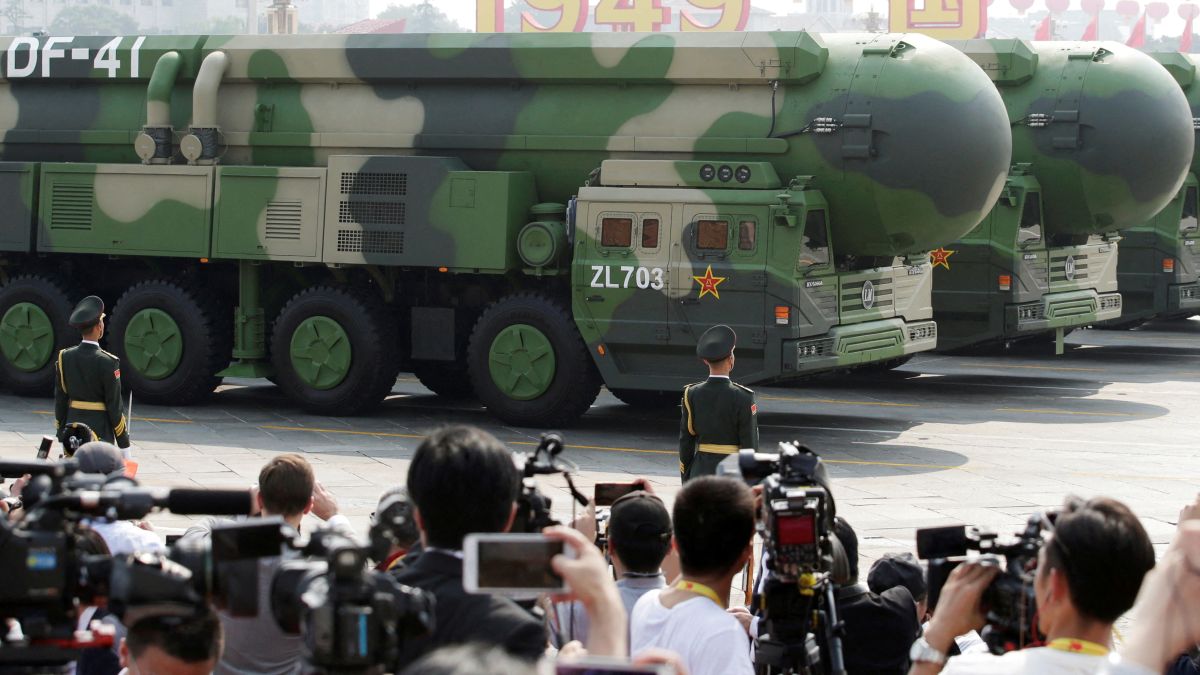China’s military strength and weapons arsenal has often been spoken about. On Wednesday morning, this power was put on display when the People’s Liberation Army (PLA) launched an intercontinental ballistic missile into the Pacific Ocean.
The timing of the launch is significant; it comes during the annual United Nations General Assembly in New York.
However, while China noted that the launch was ‘routine’, analysts and China watchers differed, saying it was unusual. Here’s why.
What do we know of the test launch?
On Wednesday morning, at 8.44 am local time, China’s PLA launched an intercontinental ballistic missile (ICBM), carrying a simulated warhead into the Pacific Ocean.
This ICBM is the DF-41, which first came into service in 2017. It is known to have an operational range of up to 12,000–15,000 km, capable of reaching the United States’ mainland.
Chinese state-run media have claimed the missile can load up to 10 MIRV warheads with a total weight of 2,500 kg.
China’s defence ministry and state media offered little to no other details about the test.
Later, the Chinese defence ministry in a statement said that the ICBM carrying the dummy warhead, “fell into expected sea areas,” and that it “was a routine arrangement” in the military’s annual training plan.
Impact Shorts
More Shorts“It is in line with international law and international practice and is not directed against any country or target,” it said.
Why is the launch unusual?
While the Asian giant maintains that the missile launch was routine, experts don’t agree.
They note that this is the first time that China has launched an ICBM in international waters since 1980. Usually, when China tests nuclear weapons, it is usually done in the country’s Taklamakan Desert in the Xinjiang region.
However, in May 1980, China had launched an ICBM — the DF-5 — which flew 9,070 km from the Jiuquan Satellite Launch Centre and landed in the Pacific. That test, according to a BBC report, had involved 18 Chinese naval ships and is still regarded as one of China’s biggest naval missions.
Speaking of Wednesday’s launch, Ankit Panda, a nuclear weapons expert at the Carnegie Endowment for International Peace, wrote on X, “Unless I’m missing something, I think this is essentially the first time this has happened (and been announced as such) in a long time.”
He also pointed out that calling it “routine and annual was odd, given that they don’t do this sort thing either routinely or annually”.
Interestingly, China said that it had notified other countries about the launch in advance, with NHK reporting that Australia and the US had been informed. However, a top government official in Japan said that it had received no prior intimation. “There was no advance notification from the Chinese side to the Japanese side,” Chief Cabinet Secretary Yoshimasa Hayashi told a news conference, adding that the missile was not confirmed to have passed over Japanese territory.
New Zealand also called the missile test “an unwelcome and concerning development.
What does China’s nuclear arsenal look like?
Experts believe that Wednesday’s ICBM launch by China is an indicator of the country’s growing nuclear and missile arsenal. The Pentagon had earlier reported that the Xi Jinping-led country was developing its arsenal more quickly than the United States had anticipated.
China has more than 500 operational nuclear warheads in its arsenal, of which approximately 350 are ICBMs, and will probably have over 1,000 warheads by 2030, the Pentagon has estimated. It further said that China’s military is also constructing hundreds of silos for land-based ICBMs.
On the other hand, the US has 1,770 operational warheads while Russia has 1,710.
Experts also note that the launch was Beijing’s way of sending a message to the world. Drew Thompson, a senior fellow at the S Rajaratnam School of International Studies (RSIS) at Singapore’s Nanyang Technological University told CNN, “This is quite a statement to launch a ballistic missile into the Pacific at this time when China is in conflict with many of its neighbours. This launch is a powerful signal intended to intimidate everyone.”
With inputs from AFP, Reuters and agencies


)

)
)
)
)
)
)
)
)



